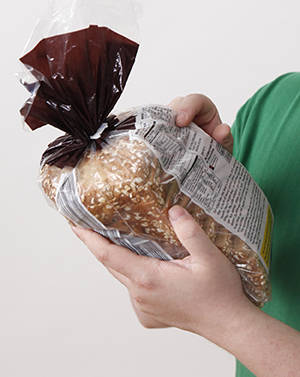Diabetes: Shopping for and Making Meals
Having diabetes doesn’t mean you have to shop in a special aisle or look for special foods. But you'll need to make healthy food choices. Comparing items and reading food labels is key. This can help you find the healthiest foods for you and your family.
Comparing items
When you shop, compare items to find the best ones for your needs. Keep these facts in mind:
-
No sugar added doesn't mean a product is sugar-free.
-
Sugar-free means less than 1/2 gram (g) of sugar per serving.
-
Fat-free means less than 1/2 g of fat per serving. This does not necessarily mean the product is low in calories.
-
Low fat means 3 g fat or less per serving. Reduced fat or less fat means 25% less fat than the regular version. Some of this fat may be saturated or trans fat. And the calories per serving may be similar to the regular version.
Making small changes
Don’t try to change all of your eating habits at once. Here are some ideas to start with:
-
Try fat-free or low-fat cheese, milk, and yogurt. Also, try leaner cuts of meat. This will help you cut down on saturated fat.
-
Try whole-grain bread, brown rice, and whole-wheat pasta.
-
Load up on fresh or frozen vegetables. If you buy canned, choose low-sodium vegetables.
-
Stay away from processed foods as much as possible. They tend to be low in fiber and high in trans fats and salt.
-
Limit how much salt you have to 2,300 mg per day.
-
Try tofu, soy milk, or meat substitutes. They can help you cut cholesterol and saturated fat out of your diet.
Learning to read food labels
To find healthy foods that help you control blood sugar, learn how to read food labels. Look for the Nutrition Facts label on packaged foods. It will tell you how many servings there are in the package. It will also tell you the amount of carbohydrate, sugar, fat, and fiber in each serving. Then you can decide if the food fits into your meal plan.

Using the food label
So, once you have the food label, what do you do with it? The food label helps in many ways. Use it to:
-
Compare items. Decide which is the best for your health needs.
-
Track the number of carbohydrates in your portions.
-
Figure out how many servings of a food you can have and still stay within the number of carbohydrates for that meal.
Planning meals
For good blood sugar control, plan what and when you’ll eat. Start by making a meal plan that includes all the food groups. Then time your meals and exercise to help keep your blood sugar level steady. You may need to adjust your plan for special situations. But 3 of the best ways to manage your blood sugar are to:
Eating from all the food groups
A healthy meal plan starts with eating many different types of foods. Look for lean meats, fresh fruits and vegetables, whole grains, and low-fat or nonfat dairy products. Eating a wide variety of healthy foods offers the nutrients your body needs. It can also keep you from getting bored with your meal plan.
Reducing liquid sugars
Extra calories from sodas, sports drinks, and fruit drinks make it hard to keep blood sugar in range. Cut as many liquid sugars from your meal plan as you can. This includes most fruit juices. These are often high in natural or added sugar. Instead, take plenty of water and other sugar-free drinks.
Eating less fat
If you need to lose some weight, try to reduce the amount of fat in your diet. This can also help lower your cholesterol level. This can keep blood vessels healthier. Cut fat by using only small amounts of liquid oil for cooking. Read food labels carefully. This can help you stay away from foods with unhealthy trans fats.
Timing your meals
When it comes to blood sugar control, when you eat is as important as what you eat. You may need to eat several small meals spaced evenly during the day. This can help you stay in your target range. So don’t skip breakfast or wait until late in the day to get most of your calories. Doing so can make your blood sugar rise too high or fall too low.
Cooking wisely
-
Broil, steam, bake, or grill meats and vegetables. Don't fry them.
-
Flavor foods with vegetable purée, lemon or lime juice, or herb seasonings. Don't use cream-based sauces or sugary glazes.
-
Remove skin from chicken and turkey before serving.
-
Look in cookbooks for easy low-fat, low-sugar recipes. When making your normal recipes, cut sugar by 1/2. Cut fat by 1/3.